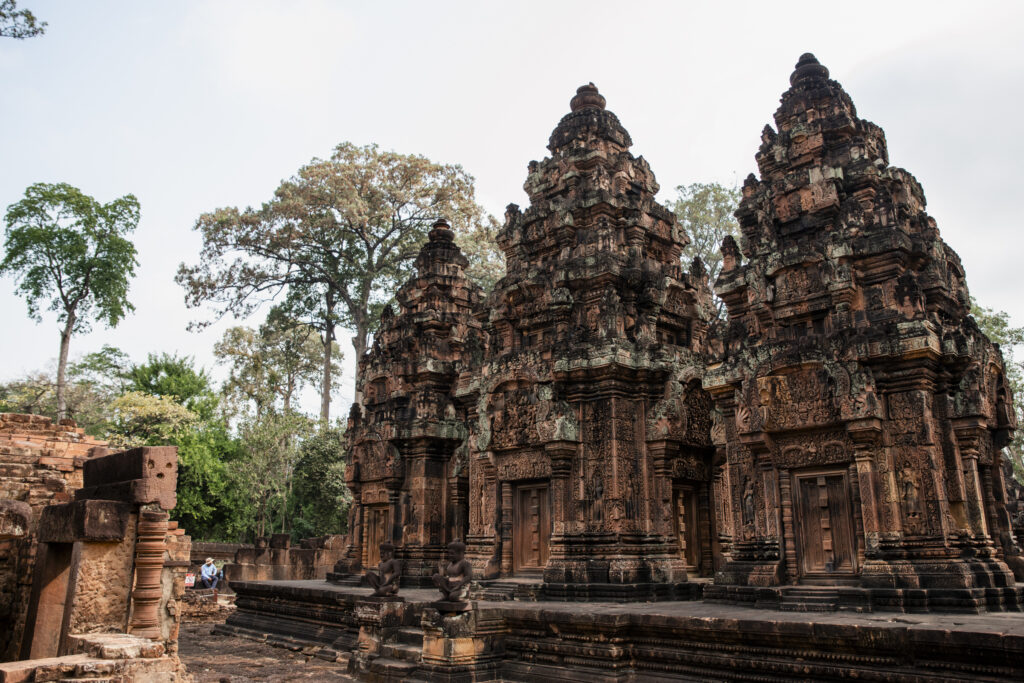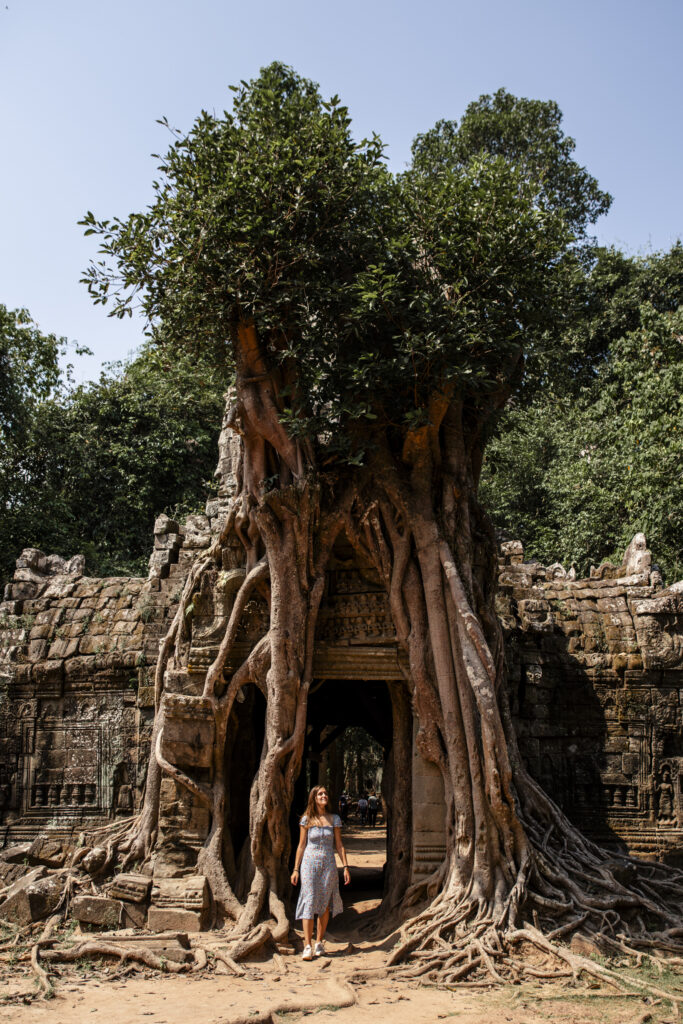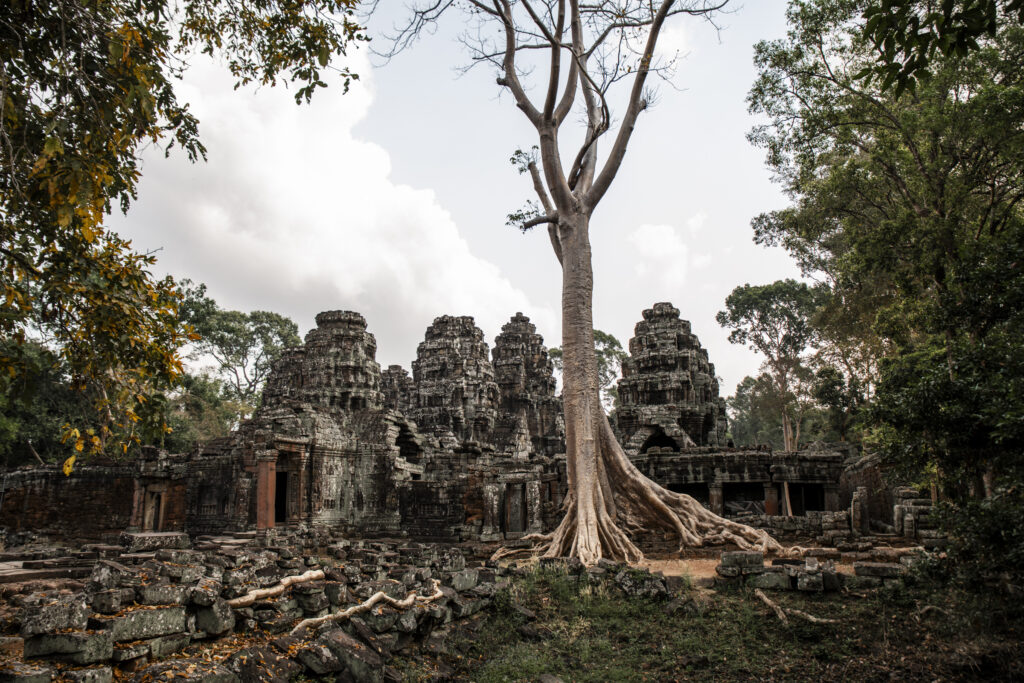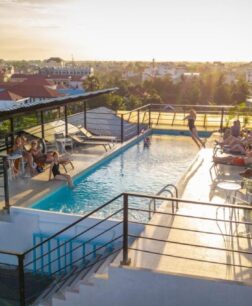How to visit Angkor Wat, Cambodia
After a chaotic drive down from the border in Laos, I arrived in Siem Riep. The city that serves as the base for visiting Angkor Wat. Angkor Wat is one of the most iconic archaeological sites in the world. It’s a testament to the grandeur of the Khmer Empire and its architectural legacy. Built in the early 12th century by King Suryavarman II, this sprawling temple complex was originally dedicated to the Hindu god Vishnu before becoming a significant Buddhist site. Recognized UNESCO World Heritage site, Angkor Wat is celebrated for its impressive temples, but also for its deep historical and cultural significance. In this article I’ll give you a comprehensive guide on how to best visit Angkor Wat. I found a really great way to optimize my visit of the temples, avoiding crowds and getting the best light! I will offer tips on when to go, what to see, and how to make the most of your experience at this awe-inspiring destination.
For more articles about South-East Asia go here.
The Ultimate Guide to Visiting Angkor Wat
Best time to visit Angkor Wat
Cambodia has warm weather throughout the year. The dry season runs from November to May and the wet season runs from May to October. The dry season is the most popular time to visit Angkor for obvious reasons. The dirt roads from to city to Angkor Wat will be more accessible, but the temples will be crowded. I was there during high season, but managed to find ways to avoid the crowds. Further down this article I will tell you how you can do it too!
The wet season is less popular, but the downpours usually happen only once a day. It also clears up the intense humidity and Angkor’s surroundings will be lush and green. The most important benefit however, is that of fewer visitors.
How to get to Angkor Wat
Angkor Wat can be reached from Siem Reap by taxi, tuk-tuk, bicycle or with a tour group. I personally think the best way is by tuk-tuk. They can navigate between the temples easily and help you avoid the large tour groups. The prices Tuk-Tuk drivers advertise with include transport to the temple complex, diving you around the route you choose and taking you back. However, it gets extremely hot during the day. Therefore, I advice heading to the temples for sunrise. Head back to Siem Reap during the hottest moment of the day. Then return to the temples late afternoon. I paid €5 extra for the driver to take me back to Siem Reap in the afternoon. My driver’s name was Rachou and he was super kind and helpful. He has given me permission to share his number. So if you’re looking for a reliable tuktuk driver in Angkor Wat, shoot him a message: +855964807998.
The Different tickets available
There are 3 types of passes available to the the Angkor Archaeological Park:
- 1-day pass – US$ 37;
- 3-day pass – US$ 62;
- 7-day pass – US$ 72;
The 3-day pass is valid for 10 days from the issue date, the 7-day pass is valid for 1 month from the issue date. So with both of these passes it’s not necessary to plan your visits on consecutive days.
The ideal 2 Day Route through the Angkor Wat temple complex
After a lot of research, looking at different routes and discussing with other travelers and our tuktuk driver, I settled on a plan. I truly feel like the way we visited Angkor was perfect! So. if you wondering: what temples should you visit at Angkor Wat and how to avoid the crowds? Here’s how I did it!
Day 1:
Sunrise At Angkor Wat:
Ask your hotel to serve you an early breakfast… and I mean early! I ended up having breakfast at 4 am and leaving around 4:50. We already had tickets, so that saved us time in the morning. The tuktuk driver we had hired arrived at the hostel and we set off to catch the sunrise in Angkor Wat. We arrived with the rest of the crowd. However, it was not nearly as bad as I had expected. We were able to get a nice spot to watch the sunrise and our plan for avoiding the crowds the rest of the day worked like a charm.
Ta Promh:
After enjoying a lovely sunrise we decided not to explore Angkor Wat right away. Everybody that had just watched the sunrise was about to head in, so we headed towards Ta Promh. We hadn’t realized that the temple wasn’t officially open yet, so for about 30 minutes we had famous tomb raider temple all to ourselves. We explored for almost 2 hours.
Ta Prohm is often referred to as the “Tomb Raider Temple”, because it appeared in the famous movie. Other temples that have been cleared of overgrowth, but Ta Prohm has been left largely in its natural state. Massive tree roots wind through the temple. The way nature has reclaimed this temple gives it a mystical, otherworldly feel, making it a favorite among visitors who want to experience the wild, untamed side of Angkor’s ancient ruins.
Bayon:
We arrived at Bayon around 9:00 am. Even though there were a few people there, it was still relatively quiet. Only around 09:30 we saw some crowds starting to form. This temple is located in the heart of Angkor Thom. Bayon is known for its enigmatic stone faces at the top of the towers, looking down on its visitors. The Bayon temple was built in the late 12th century by King Jayavarman VII. Bayon served as his state temple and is dedicated to Buddhism. The 54 towers are adorned with over 200 smiling faces, thought to represent either the king himself or the Bodhisattva of compassion.
Banteay Kdei:
This was the last temple we visited before taking a break at 11:00 and returning to Siem Reap. Banteay Kdei, means “Citadel of Chambers,” and is a peaceful and lesser-visited temple. It is located near Ta Prohm. Built in the 12th century, this Buddhist temple features a more understated design compared to some of its grander neighbors, but it’s also very beautiful.

We returned to Siem Reap at 11:00 to avoid the hottest hours of the day. This way we could also enjoy a nice lunch instead of the limited options at the temples. We returned to Angkor after lunch.
Angkor Wat:
Now it was finally time to explore Angkor Wat on the inside. We took the entire rest of the afternoon walking around Angkor Wat. Angkor Wat is the crown jewel of Cambodia’s ancient temple complex, and it’s easy to see why. This massive structure, originally built in the 12th century as a Hindu temple dedicated to Vishnu, later transitioned into an important Buddhist site. There stunning intricate carvings that dept tales from Hindu mythology and the central towers rising above the temple are an iconic sight.
Day 2:
Pru Rup:
We started our day at the Pre Rup temple at 7:30. There was beautiful soft golden morning light. Pre Rup is a striking temple mountain built in the 10th century and offers a glimpse into Angkor’s earlier architectural style. The temple was dedicated to the Hindu god Shiva. The temple has three towers sitting at the top and the reddish stone looks beautiful with the golden sunlight at sunrise or sunset.
Banteay Srei:
Banteay Sri is located 25km away from the main temple groups. Tuktuk drivers charge $6 extra to visit this one as its further out. I really wanted to see this one though! Banteay Srei is known for its intricate carvings. This 10th-century temple is smaller than many of the other temples at Angkor, but what it lacks in size, it more than makes up for in the extraordinary detail of its artwork. The delicate carvings of mythological scenes, deities, and floral patterns are some of the finest in all of Angkor. Because of its more remote location, it’s often less crowded.
Ta Som:
Next up was Ta Som. This is a charming, smaller temple that offers a peaceful respite from the busier sites within the Angkor complex. Built in the late 12th century by King Jayavarman VII, Ta Som is known for its picturesque gateway, where a massive strangler fig tree has taken over the eastern entrance (gopura).
Preah Khan Temple
This temple was most famous for the enormous tree growing on top of it, but they had it cut down in 2022. Even though that was a small disappointment, the temple was still beautiful and worth a vist. Preah Khan’s served as a centre for worship and learning. The temple was dedicated to a whopping number of 515 divinities. During the course of a year 18 major festivals took place here. It required a team of thousands just to maintain the place.
Phnom Bakheng for Sunset
While we were there this was the only temple that was open for sunset. I recommend arriving early, because it gets very crowded, making it difficult to find a nice spot to sit. Phnom Bakheng temple sits on top of a hill and offers some of the best panoramic views over Angkor. It was built at the end of the 9th century and originally dedicated to the Hindu god Shiva.
Visiting Hours
Most of the temples in the park are open between 7.30am – 5.30pm, but there are a few exceptions:
Angkor Wat and Srah Srang are open between 5am – 5.30pm
Phnom Bakheng is open from 5am – 5.30pm
Pre Rup is open from 7am – 5.30pm
Respectful visiting guidelines:
You should cover shoulders and knees, when you enter the temples. If you don’t dress appropriately, they may refuse access inside the temples.
Buddhist monks are highly respected in Cambodian culture. If you want to adhere to their culture, women should not touch, sit too closely, or stare at monks. I personally don’t agree with the double standard for men and women, but I also think this is not the place to address that. Additionally, it’s also important to ask for permission if you want to take their photo or of anyone in Cambodia for that matter.
Where to stay in Siem Reap?
There’s so many great places to stay in Siem Reap, it’s hard to choose. I stayed at Onederz hostel, because I wanted something social to be able to meet other travelers, but with a little more luxury than the average hostel. Onederz is just that. It has an amazing pool and great restaurant. They also offered 4 am breakfast if you for those who want to see the sunrise at Angkor Wat. If you’re looking for a little more luxury and privacy these two places are among the best in Siem Reap:
















